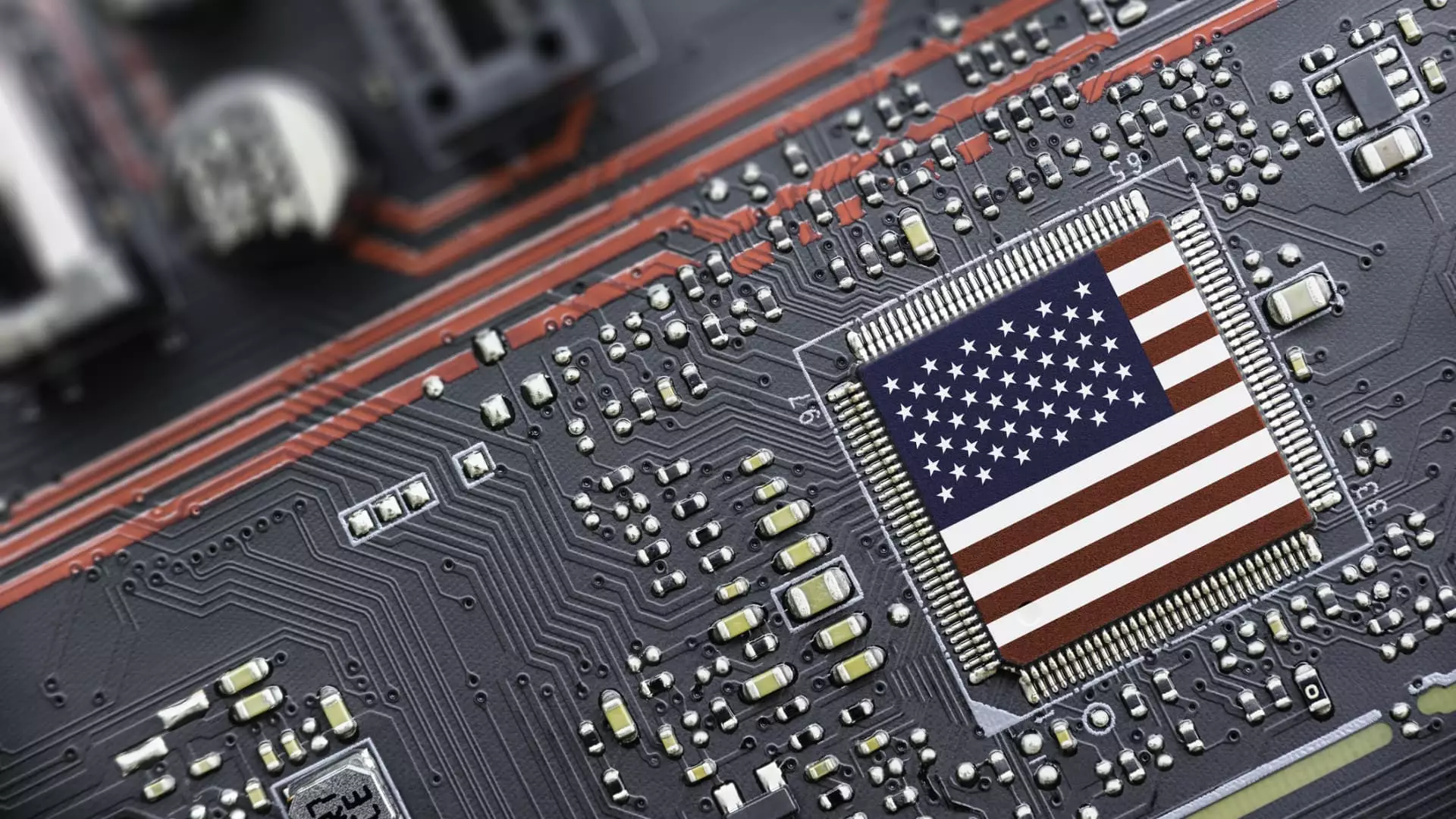Last Thursday, the semiconductor sector experienced a significant downturn, raising serious alarms despite the facade of good news regarding tariffs. President Donald Trump’s recent announcement, which intended to exempt semiconductors from hefty tariffs—most notably Taiwan’s staggering 32% levy—initially sparked a glimmer of hope. However, this optimism was short-lived. Major players like Nvidia saw their stocks plummet nearly 7%, marking a staggering year-to-date decline of almost 24%. Micron and Broadcom followed suit with declines of 14% and 9% respectively. Why did investors turn their backs on an announcement that seemed to signal relief? It turns out that the details are less favorable than they initially appear.
While the tweet-worthy headlines boasted tariff exemptions, the substance suggests otherwise. The plans merely postpone semiconductor-specific levies, leaving uncertainty lingering in the air. Without clarity on how tariffs will be structured in the future, companies remain in an anxious limbo, dissuading investors from buying into the optimism. Morningstar analysts have already projected a 10% tariff on semiconductor goods, adding a dimension of dread to what could be just a temporary reprieve.
Demand Destruction Looms Large
If the threat of impending tariffs isn’t concerning enough, the ripple effects of already imposed tariffs cannot be ignored. The semiconductor industry is notorious for its intricate supply chains; most chips reach U.S. shores encased within finished products like smartphones and PCs. Currently, there’s an ominous $200 billion worth of imported computing equipment and $114 billion in wireless devices facing potential tariff rates approaching 40%. This could dissuade consumer spending, with repercussions that extend far beyond individual companies to the entire tech landscape.
Nvidia is particularly vulnerable, as the company has been heavily reliant on Chinese demand for its innovative H20 AI chips. Reports suggest that Chinese firms, driven by fear of restrictions, have inundated Nvidia with massive orders. However, this strategy risks overextending Nvidia’s production capabilities. With looming export limitations likely to materialize, the prospect of maintaining a balanced demand-supply equation is fraught with tension. This situation presents serious questions about Nvidia’s long-term viability in its biggest market.
The Infrastructure Conundrum
If these factors weren’t enough to muddy the waters, emerging reports indicate potential setbacks in critical infrastructure projects across the globe. Microsoft, for instance, has reportedly suspended or delayed numerous data center projects—ranging from Indonesia to the UK and several states in the U.S. For a sector that was previously riding high on cloud and AI services as the main growth drivers, this abrupt about-face should send shivers down the spine of investors.
As companies like CoreWeave face substantial price drops, the fundamental question arises: How will this shift in investment impact the long-term demand for AI services? The once-rosy projections for rapid growth have now been clouded by uncertainty, leaving inexperienced investors clinging to straws of optimism in an increasingly murky landscape.
A False Sense of Security for Domestic Manufacturers
A common narrative surrounding this crisis is the possible resurgence of American manufacturers like Intel and GlobalFoundries, as production shifts back to domestic facilities. But let’s be realistic: any short-term benefits resulting from protectionist policies are likely to be overshadowed by a broader decline in demand. If American companies are to thrive again, they need a robust consumer base—something that could easily crumble under the weight of escalating tariffs and an uncertain economic climate.
Instead of fostering an environment that encourages innovation and growth, the current strategy resembles a half-measure designed to placate constituents rather than facilitate true industry resilience. The tariffs are designed more for political optics than for long-term economic health, a reality that markets are starting to grasp.
With the fate of chip stocks teetering on a precipice, investors can only wonder where the market will land as it navigates through murky waters. The initial relief brought on by tariff exemptions has given way to a chasm of uncertainties and potential collapses. The semiconductor industry, a critical backbone of modern technology, might soon find itself trapped between optimistic proclamations and stark realities of an impending crisis. The clock is ticking, and serious decisions loom ahead. It’s a challenging era for chip manufacturers, and how they respond could dictate the future of not just their industry but the entire tech ecosystem.

